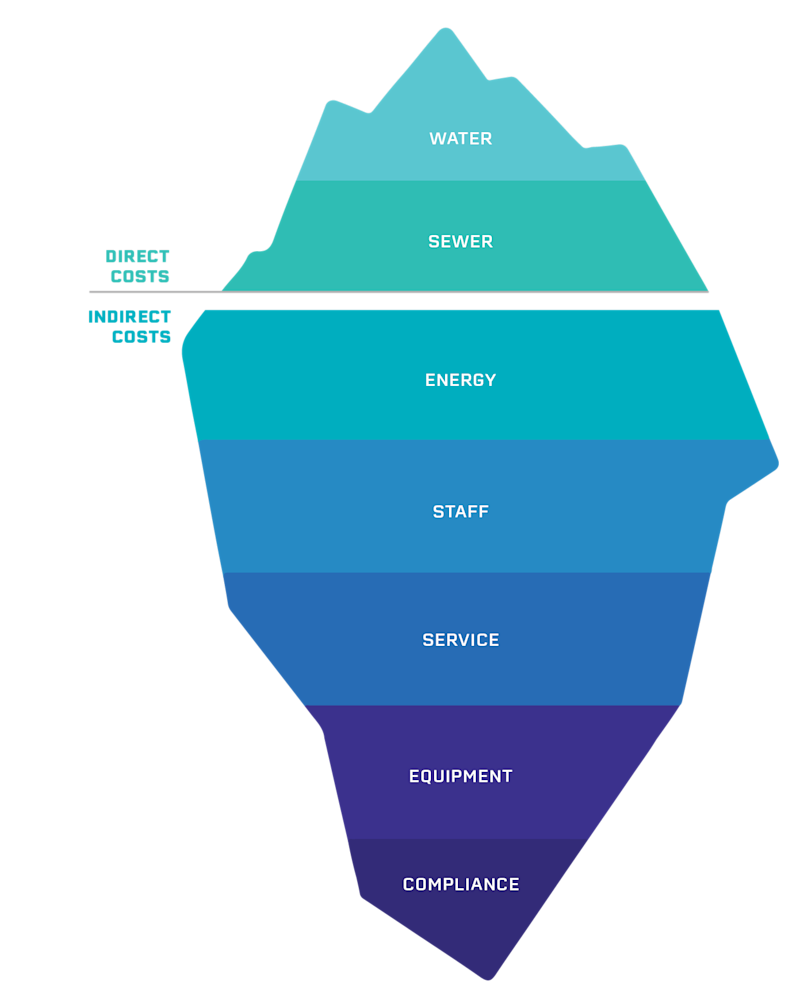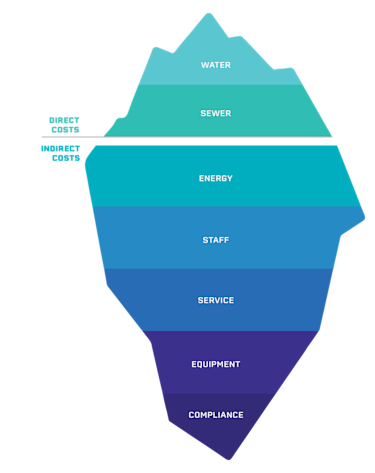The concept of environmental sustainability often comes with biased, misrepresented, or even politically charged connotations. To help put sustainability into a more focused and business-minded perspective for the manufacturing industry, we want to get the industry on the same page and provide some context – at least to get conversations started. It’s a complex subject that will take some time for us all to fully understand and adopt, but at the very heart of it, sustainability makes good business sense for many reasons.
Earlier this year, AMT initiated a multipaper series regarding sustainability to help provide context, focus, and insight. So far, we’ve covered a brief overview of sustainability in manufacturing and the importance of water conservation in manufacturing. In the coming months, we will discuss the importance of choosing the right materials, reclaiming and recycling, and the technologies that can enhance sustainability. I encourage you to dive deeper into the sustainability topics covered in that series. These articles can be found at AMTonline.com/tag/sustainability.
Fortunately, more manufacturers are developing their own policies and programs for environmental sustainability. A 2019 National Association of Manufacturers survey found that 71.9% of manufacturers had a sustainability policy in place, and another 8.3% were developing one. However, the meaning of sustainability and the ways to improve sustainable manufacturing can vary greatly from one organization to another. For example, leading into IMTS 2022, Siemens USA CEO Barbara Humpton stated through a press release: “Together, we will demonstrate that investments in decarbonization not only protect our environment, but bolster productivity and generate strong business results. Our collective action will shape the next century of American leadership and growth.” Her statement provided a holistic, collective interpretation of a sustainability mandate.
While Humpton and Siemens’ efforts are directly stated, some firms indirectly enable sustainability through their offerings, such as Xelevate in Leesburg, Virginia, a physical drone/unmanned aircraft system (UAS) ecosystem proving ground. Xelevate is engaged by many drone/UAS companies for systems testing, development, training, innovation, and demonstration. Their clients’ use cases vary from oil and gas production monitoring to forestry and gas emission-sensing analysis. Despite not having a direct mandate like Siemens, their services support the sustainability efforts of their customers, and that focus on sustainability impacts both operations and the environment.
Even within the government, there is a slightly different definition focus for sustainability. The Department of Energy recently created the Advanced Materials and Manufacturing Technology Office (AMMTO), which “supports a globally competitive U.S. manufacturing sector that accelerates the adoption of innovative materials and manufacturing technologies in support of a clean, decarbonized economy.” The AMMTO does this through their mission “to inspire people and drive innovation to transform materials and manufacturing for America’s energy future.” Here, the DOE’s AMMTO aligns funding incentives to specific challenging areas of sustainability: materials and manufacturing technologies.


Creating Standards
The biggest challenge for sustainability now is the lack of a common, industry-wide metric. It will take a concerted effort from industry leaders and trade organizations such as AMT – The Association For Manufacturing Technology to advocate for, if not spearhead, the development of sustainability metrics and standards in such areas as carbon emissions, energy and water use, reclamation, and waste reduction. So far, some of the most promising initiatives have focused on materials and reuse, such as the EPA’s Sustainable Materials Management Tools and the ISO 14040 framework series on life-cycle analysis.
In an effort to identify standards for product design, production, and recovery in the context of a circular economy, the ASTM International Committee E60 on Sustainability and the National Institute of Standards and Technology (NIST) recently conducted a workshop of key stakeholders. Earlier this year, a report was shared on that workshop’s findings, which cited the need to further develop, expand, and scale up standards around sustainability; integrate life-cycle thinking into product design with particular forethought paid to end of life options; refine and adopt best practices as more knowledge is gained through experience and as technologies advance; and educate the public on sustainability standards among other needs and areas of focus.
In 2021, the Remanufacturing Industries Council (RIC) published the first American National Standard for Remanufacturing (ANSI RIC001.2-2021), which established specifications that characterize the remanufacturing process and differentiate remanufacturing from other practices. The guidelines are based on remanufacturing best practices collected by surveying large and experienced OEMs. At this point in the life-cycle of sustainability, the RIC’s work has proved commendable, and reviewing the standard provides key information and context for companies interested in creating new business opportunities in this area.
What Sustainability Is and Isn’t
The U.S. Environmental Protection Agency defines manufacturing sustainability as “the creation of manufactured products through economically-sound processes that minimize negative environmental impacts while conserving energy and natural resources. Sustainable manufacturing also enhances employee, community and product safety.” In other words, when it’s done right, sustainability enhances the health of both the business and its employees. The EPA has teamed with five other agencies to provide small and medium-sized manufacturers with custom assessments to increase profits and create new job opportunities while reducing pollution and energy use through E3 (Economy-Energy-Environment), a technical assistance program.Sustainability is not a one-time goal or short-term program that can be forgotten once accomplished. It isn’t a product of regulations or a response to investor pressures but an intentional response acknowledging all that is interconnected and impactful within an ecosystem. Sustainability is continuous improvement exemplified. American companies often talk of Kaizen events, short-term brainstorming events designed to create change for the better, but true Kaizen requires achieving sustained continual improvement; sustainability is a pillar.


Why It Matters
Manufacturing and supply chain applications are systems engineering disciplines now more than they have ever been. Therefore, a business value proposition may lie in the offering itself, a customer’s engagement with those offerings, or the means by which those offerings are delivered. Sustainability has encouraged additional areas of value provisions to our marketplace in ways that might improve not just a carbon footprint but also availability, operability, and efficiency.
What We Should Do
There are a few steps that every company can take to step into a more environmentally sustainable mindset.
Think strategically.
Understand the needs of today but consider what must be true for your company to thrive 10 or 20 years from now.
Plan knowingly.
This includes creating purpose-driven projects and using data-driven metrics. For example, set a goal for reducing operational carbon emissions by a certain percentage and specify that you will achieve it by incorporating carbon sequestration or capture technologies or using reclaimable, recyclable packaging.
Act responsibly.
Align your talent to your mission and live consistent with that mission. Create a stewardship mentality, not just a sustainability initiative.
We encourage you to reach out to your local Manufacturing Extension Partnership (MEP) center, community college or university, or economic development group to see what programs, tools, or support they might offer to get you further along on your company’s sustainability journey. As always, please reach out to AMT if you want to share your journey – both its challenges and successes.
To read the rest of the Energy Issue of MT Magazine, click here.





